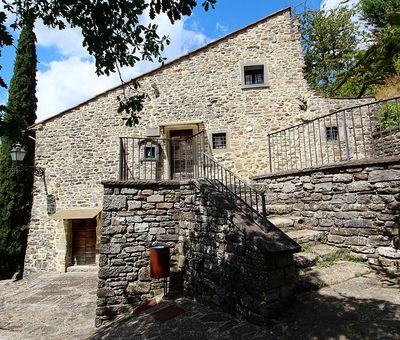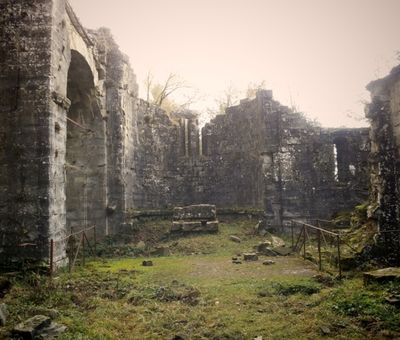The path of sounds
Ascending Via Musicalis, you reach the belvedere of Castellaccia. Accompanied by the songs of nature, we arrive at the birthplace of Guido Monaco, the Benedictine abbot who gave the names to musical notes as we know them today. As a reminder, polychrome ceramic tiles with the imprint of the "harmonic hand" line the route, with a commemorative plaque displayed on the little church of Castellaccia.
"The sounds, allusively honoring Guido Monaco are symbolized by the Gironde, Flutes, Harp, Score, Psalter and the Harmonic Hand, embodied by the music of the wind, by the morning chirping of birds, by the deafening silence of sunny noon and by the soft song of the waters that gurgle among the stones of the stream below"
In 1025, Guido taught music and singing, first in the Abbey of Pomposa and then in the historic seat of the Cathedral of Arezzo. Observing the difficulty that the monks had in learning and remembering the notes of Gregorian chants, he adopted a new teaching method. To help the singers, Guido proposed the syllables and the opening notes of the verses of the hymn to St. John the Baptist:
“Ut queant laxis, Resonare fibris, Mira gestorum, Famuli tuorum, Solve polluti, Labii reatum, Sancte Iohannes”
Guido also codified the way of writing notes by defining their positions on the lines and spaces of the musical stave. The stave used by Guido had four lines and was therefore called tetragrammaton: the predecessor of the pentagramma.
The Abbey of Santa Trinita in Alpe
"The stones, with their age and rusticity, reveal better than any other evidence the secular events, popular values and the social characteristics of this Casentino town"
The stones are the defining feature of Talla, present in the facades of houses, the Ponte di Sasso and the ruins of the Abbey of Santa Trinita in Alpe.
Walking in the woods of Talla allows you to immerse yourself in rugged nature. One of the itineraries to follow is certainly that which leads to the Abbey. It can be reached from Pantenano by following a dirt path. Near the Capraia stream, in the middle of a clearing that opens up among the fir trees, there are the ruins of the historic building built just before the year 1000. The Abbey of Santa Trinita in Alpe was founded by two monks of German origin, the hermits Pietro and Eriprando, who chose this place for the passage of pilgrims on their way to Rome. At the ruins, you can see a 31.70 m long and 18.60 m wide plan, an area reserved for monks, one for the visitors and a small crypt with the original columns and capitals. In the middle of the woods, the stones of Talla remind us of this glorious past.Quotes from the text by Carlo Cresti: Talla, le Pietre Raccontano





